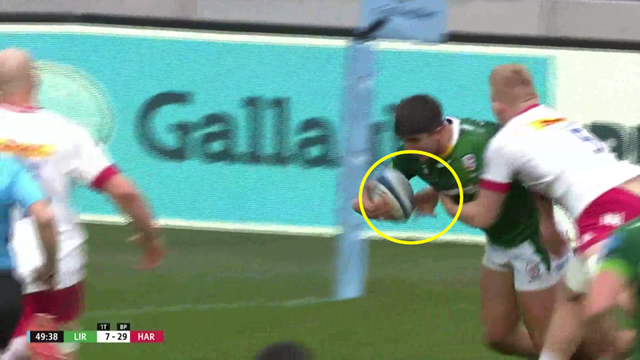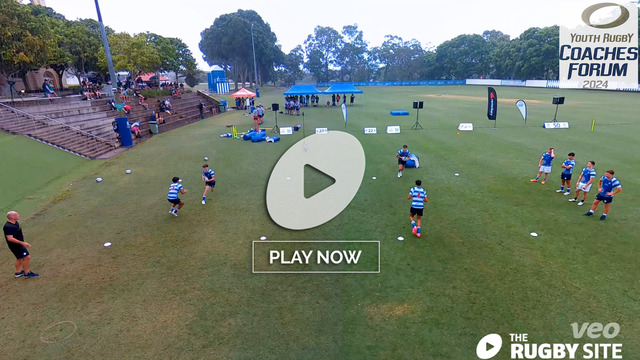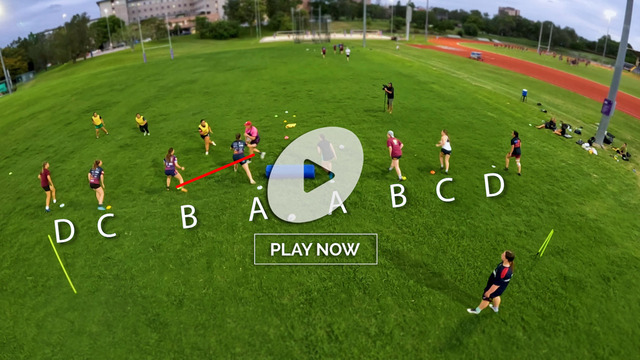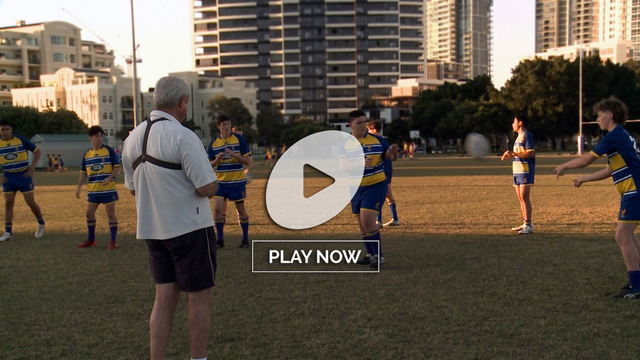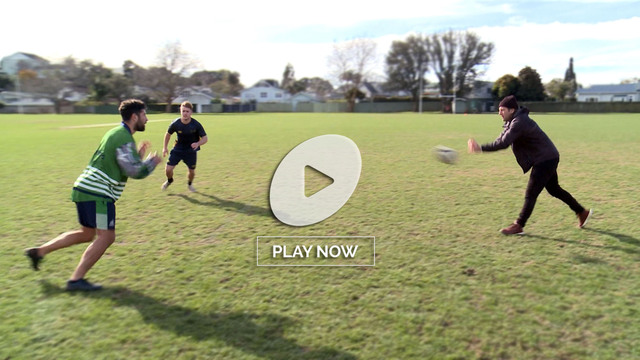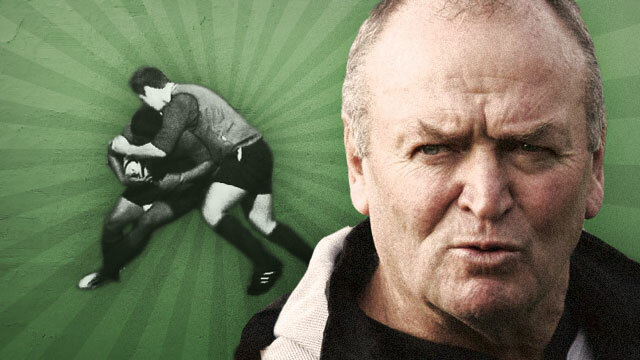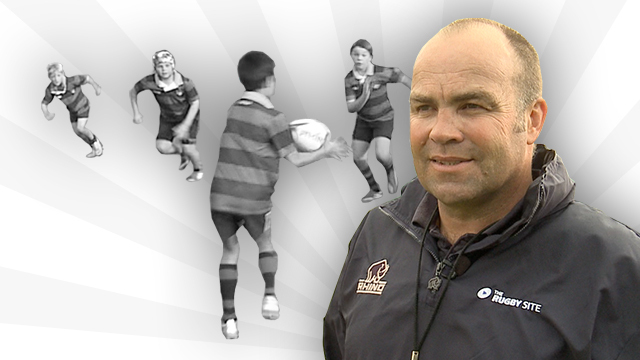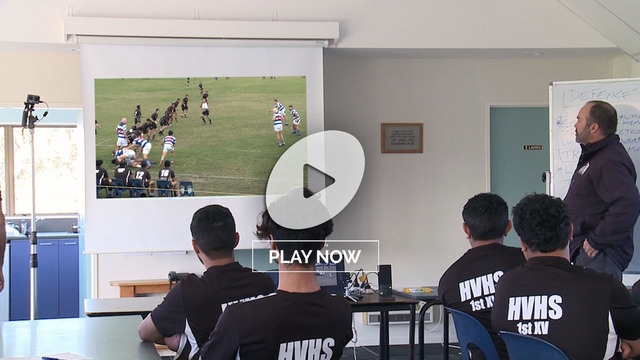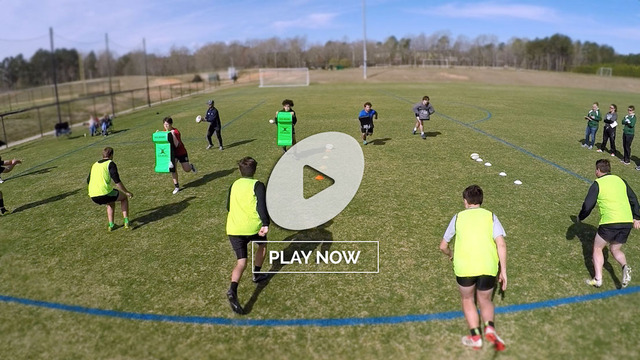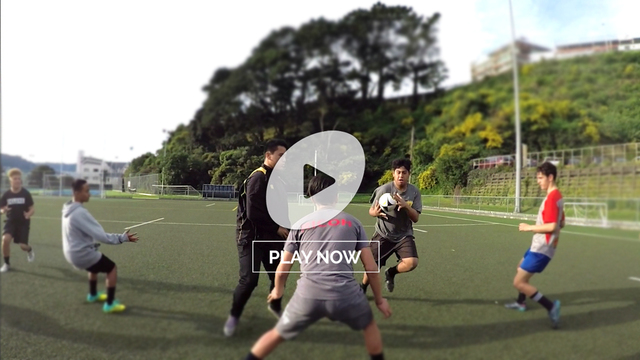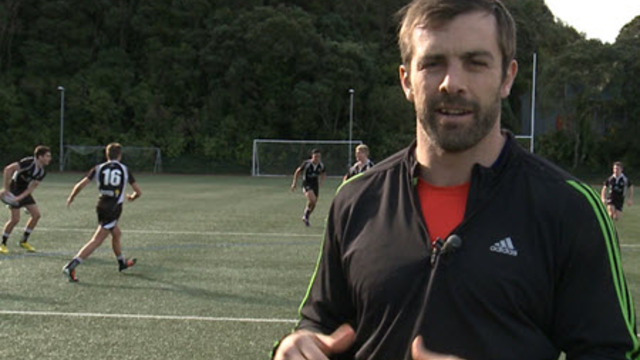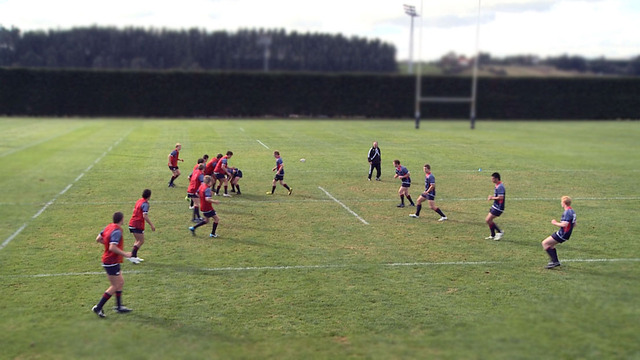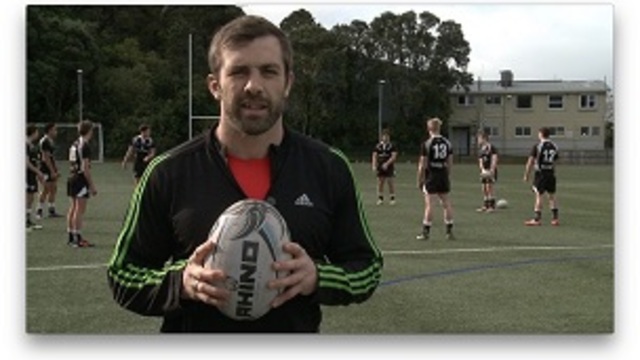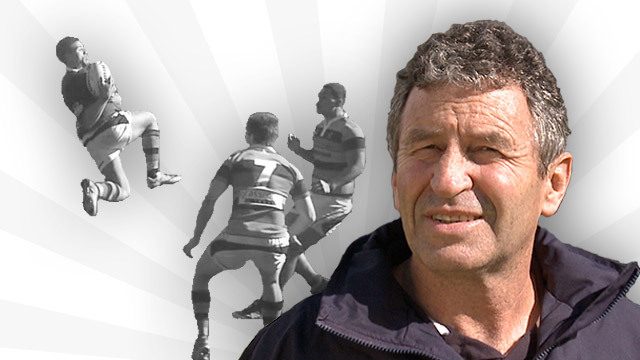The new trial laws brought in on 1st August 2021 not only increased the effective attacking width of the field with the 50/22 kicking rule, they also extended its depth with the idea of the goal-line drop-out.
Attacking sides could now kick into the in-goal area knowing that if the defender touched the ball down, the ensuing restart would be made from the goal-line, not the 22m line. That represents a significant territorial gain for the receiving team.
The other aspect of World Rugby’s goal-line drop-out rule has proven to be just as important:
““Goal line dropout: The awarding of a goal-line drop-out to the defending team when an attacking player, who brings the ball into in-goal, is held up.
Rationale: To reward good defence and promote a faster rate of play.”
In old money, if an attacking player managed to breach the goal-line without being able to ground the pill, the result was a 5-metre scrum to the attack. Pressure was sustained, and little if no momentum at all was lost.
Now the outcome is a goal-line drop-out to the defending team, and the chance to create about 30-40 metres of breathing space after an enthusiastic kick chase. All the pressure evaporates in an instant.
Effectively, the depth of viable defence has now been increased – defence begins behind the goal-line rather than in front of it. Defences have evolved to include techniques which prevent the attacking player from touching the ball down for a try.
Two recent games, one from Super Rugby Pacific and the other from the Gallagher (English) Premiership, illustrated some of the developments made and lessons to be learned.
The first idea is to prevent grounding by getting hands, arms or any other body part in between ball and turf. ‘Defence behind the goal-line’ can be applied equally well from a backs move:
It can also be used against a short drive through the forwards:
The first example comes from a wide attack in the game between London Irish and Harlequins. Irish centre Curtis Rona is tackled just short of the line, and the responsibility of the nearest defender (Quins number 11 Luke Northmore) is to slide to deck and get his hands underneath Rona’s attempt to plant the ball over the goal-line. He achieved his aim and the try was denied.
The second instance comes from a lineout drive, in the match between the two table-toppers in the Australian segment of Super Rugby Pacific, the Reds and the Brumbies. The main maul defender (number 5 Angus Blyth) wraps up the Brumbies ball-carrier (scrum-half Ryan Lonergan) but realizes that he will not be able to stop the ball being moved across the goal-line. But he also knows that he can allow that movement while positioning his body between the ball and the grass.
In both cases, the outcome was a goal-line drop-out, and relief for the defending team. Defence in the in-goal area can also occur with the ball still in the air, and about to be planted:
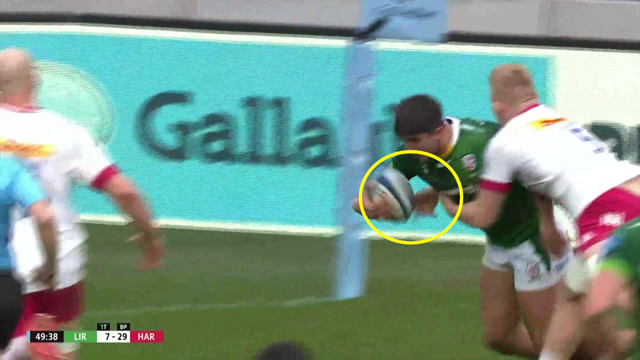
In this instance, the London Irish wing Lucio Cinti is preparing to ground the ball just as the defender (Quins second row Hugh Tizard) looks to punch it out of his grasp. This is a technique commonly applied by defenders in the NFL to create fumbles: the arm swings around the back of the ball-carrier and straight on to the ball. As long it travels backwards, the move is perfectly legal.
In response, ball-carriers need to take extra precautions: wrapping up the ball with both arms, tucking it into the chest or shifting it away from contact wherever possible:
Irish centre Bernhard Janse van Rensburg tucks the ball into his chest in anticipation of the ‘punch’ by fellow countryman Wilco Louw, and in this case the try is scored.
When all is said and done, London Irish surrendered the possibility of 21 more points on the scoreboard through their failures to ground the ball over the goal-line. Their main enemy was mostly their opponent, on occasion it was also modern technology associated with the need to check the legitimacy of every try:
Irish wing Ollie Hassell-Collins reaches out to plant the ball with one hand, but loses contact with it at the very last moment. It is the sort of ‘try’ which would have been given without hesitation in the amateur era, when every event was viewed in real time without the benefit of granular slow-motion detail.
Summary
The new goal-line drop-out rule is important for both attack and defence. For the attack, it allows teams to target the whole length of the field (including the in-goal area) knowing that any touch-down by the defence will trigger a restart 25 metres closer to their own posts.
Likewise, defence begins in the in-goal area, not beyond it. Defensive sides can look to hold the ball up, punch or slap it out of the attacker’s grasp, knowing that the relief of a clearing kick (rather than another 5m scrum) is at hand. Extra security for the ball-carrier about to dot the pill down is a ‘must’!
